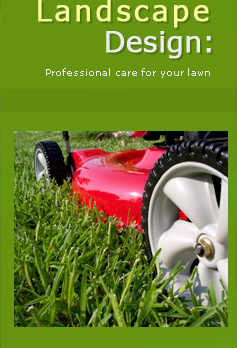


Lawn & Garden Maintenance Services | Lawn Care Products & Programs | FAQs & Lawn Tips
Lawn and Garden Maintenance Services
Weekly Lawn & Garden Care
Spring Cleanup
Fall Cleanup
Lawn Aeration
Dethatching
Click here to download and print our lawn maintenance terms & conditions.
Lawn Aeration
Core aeration of large Estate, or Residential properties at extremely reasonable rates!
Benefits:
Dethatching
We provide dethatching of large Estate, or Residential properties at extremely reasonable rates!
Thatch Problems
Thatch is a layer of organic matter made up of decaying grass leaves, stems and roots that build up in between the lawn and soil surface. It is a common problem on home lawns, particularly for lawns established for several years.
Identification
A thatchy lawn feels very spongy when walked on. Cut a triangular patch of lawn with a sharp knife and lift it back to measure the thickness of the thatch layer. More than 2.5 cm of thatch is too much.
Why is Thatch a Problem?
Thatch harbours insects and diseases. Thatch can restrict grass roots from growing into the soil root zone, resulting in a shallow rooted lawn. Thatch interferes with water infiltration.
Minimizing Thatch
Cultural practices that minimize thatch development are:
Excess thatch can be removed by vertical mowing or core aerating. Core aerate using a hollow steel tine core aerator which removes cores of soil. This physically breaks up the thatch, brings up beneficial soil micro-organisms that help break down the thatch.
More About Thatch
Description
What Causes Thatch?
Advantages
Disadvantages
What Can Be Done to Control Excessive Thatch?
Description
Thatch can be described as a tight and fibrous layer of living and dead matter, primarily roots of the grass, which develops between the plant and the soil.
Many people think that grass clippings contribute to thatch; however, grass clippings consist primarily of water and dry up and disintegrate. Thatch consists of woody plant material like roots, rhizomes and stolons that are slow to breakdown.
What Causes Thatch?
Advantages
A thin layer of thatch of about 1.5 cm is beneficial because it acts like a mulch, buffering temperature extremes at the soil surface and helping to retain soil moisture. A thin thatch layer is also beneficial because it will inhibit weed seed germination and establishment.
Disadvantages
When the thatch layer grows thicker than 1.5 cm it becomes detrimental to the health of the lawn. Excessive thatch inhibits the movement of water, nutrients and air into the soil, resulting in shallow roots and a lawn highly susceptible to drought and root feeding insect damage.
Excessive thatch also makes it difficult to control root feeding insects. The thatch layer impedes the movement of pest controls into the soi, reducing the efficacy of the treatment. A thick thatch layer is the perfect environment for some insects. Chinch Bugs will flourish in a thick thatch layer and can cause extensive damage.
Disease organisms reside in the thatch layer and when environmental conditions are conducive for the disease, an outbreak can occur.
What Can Be Done to Control Excessive Thatch
